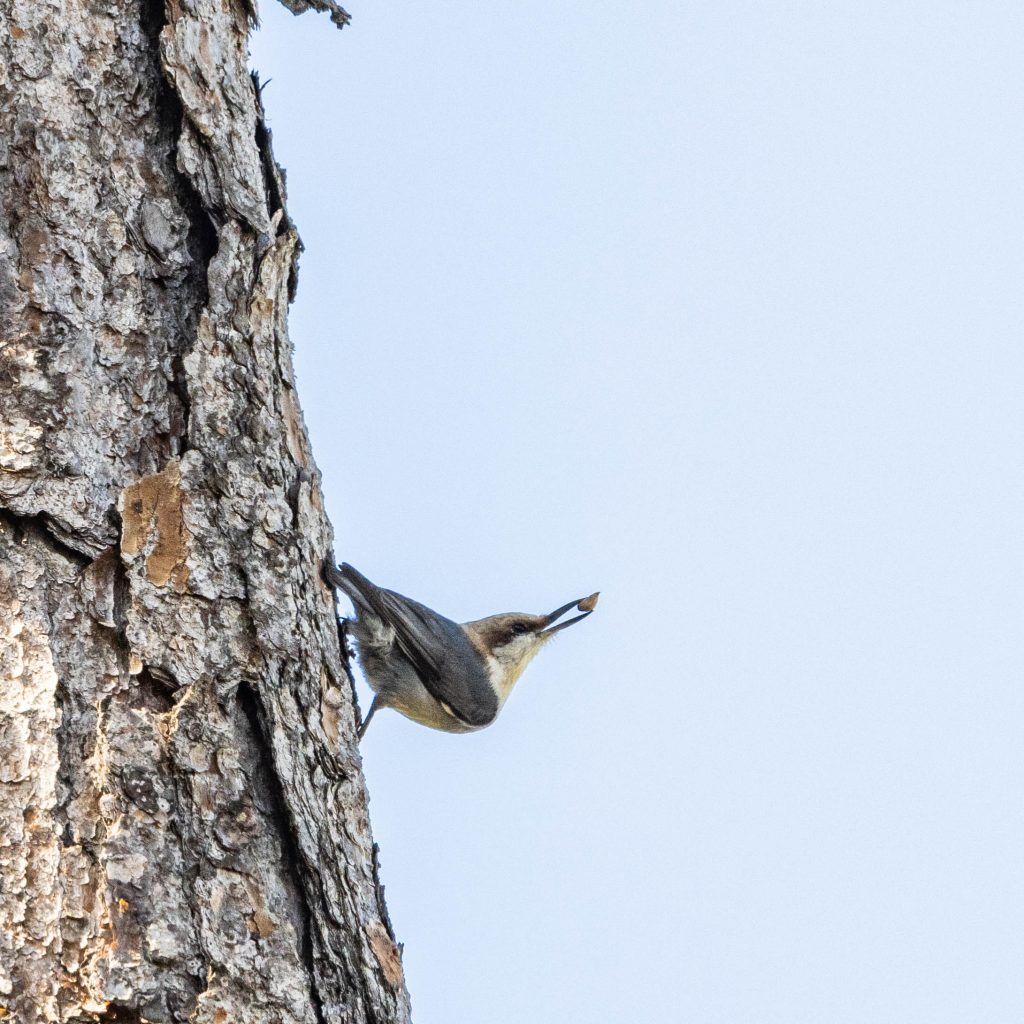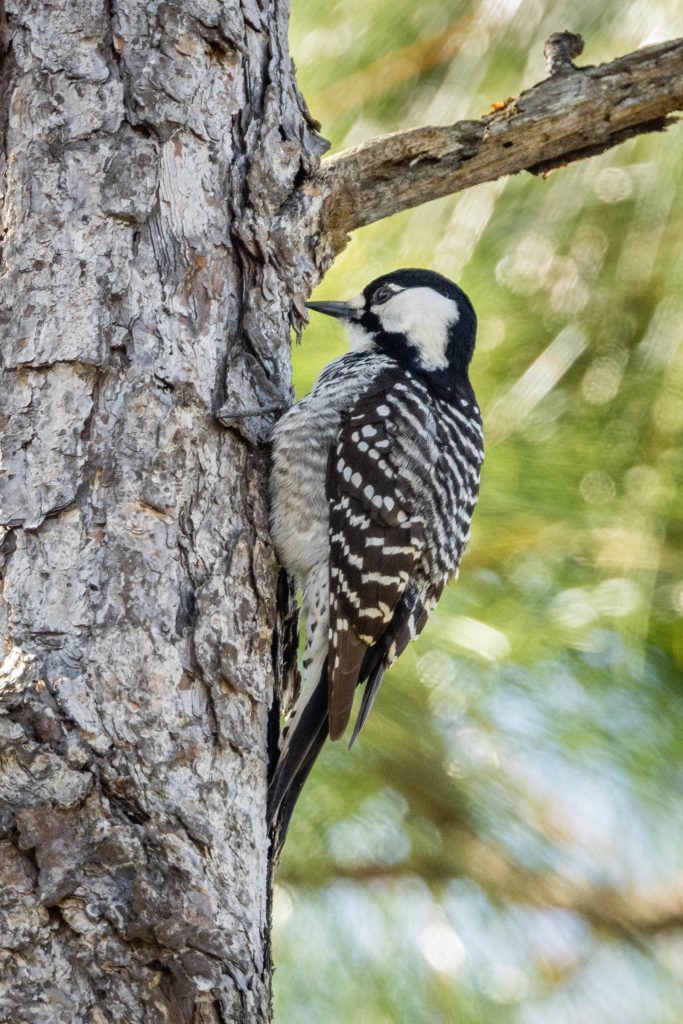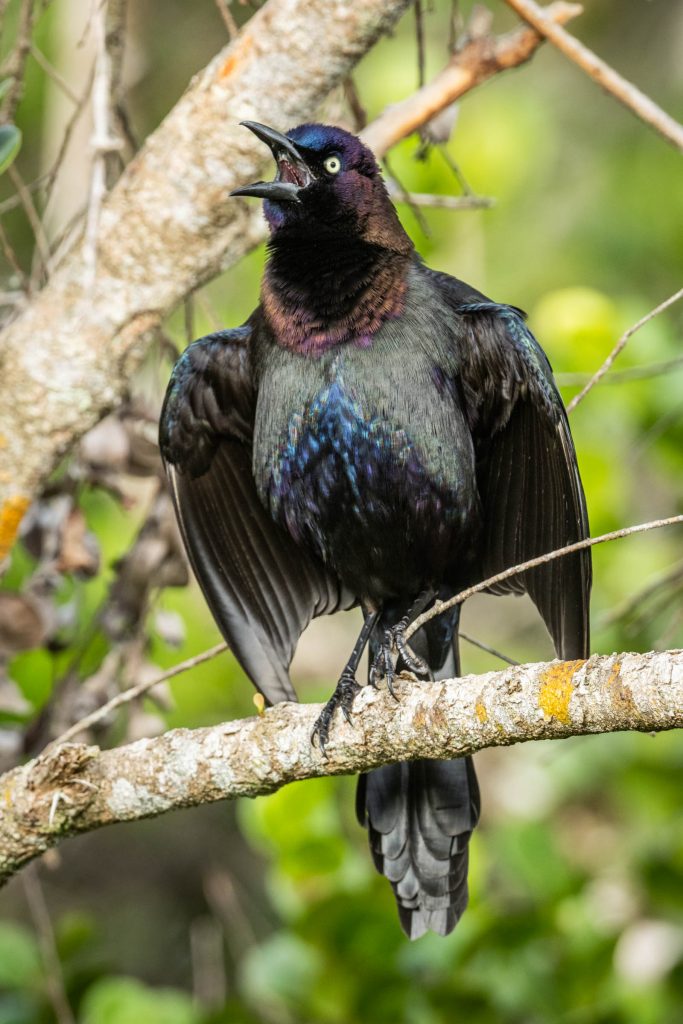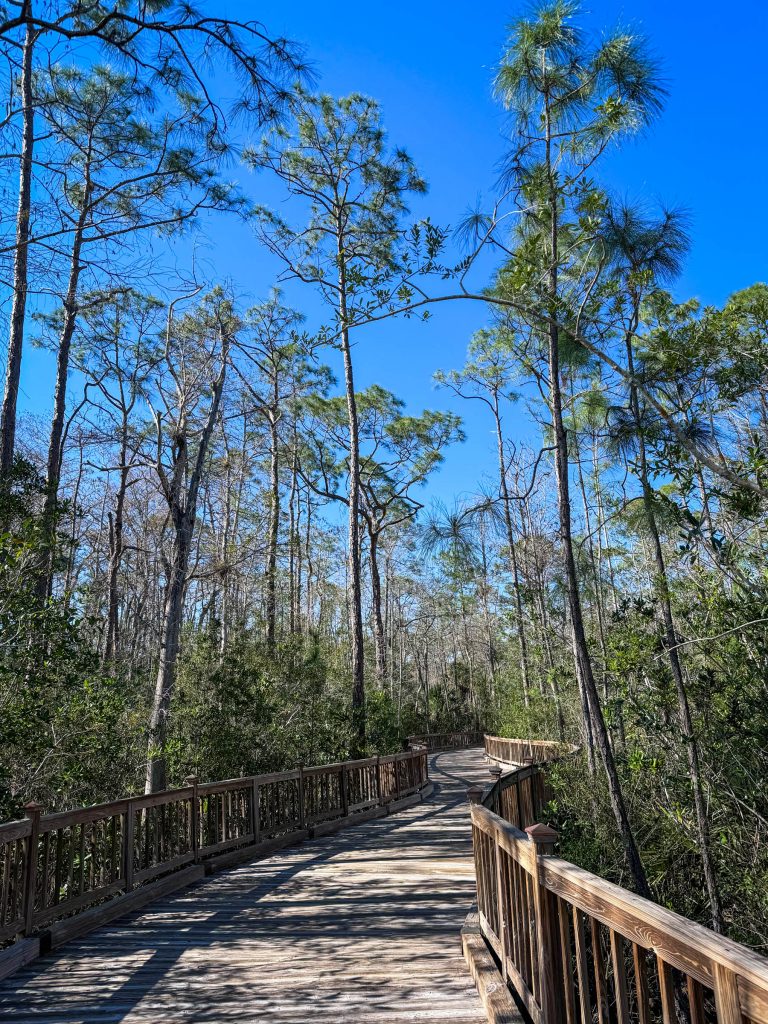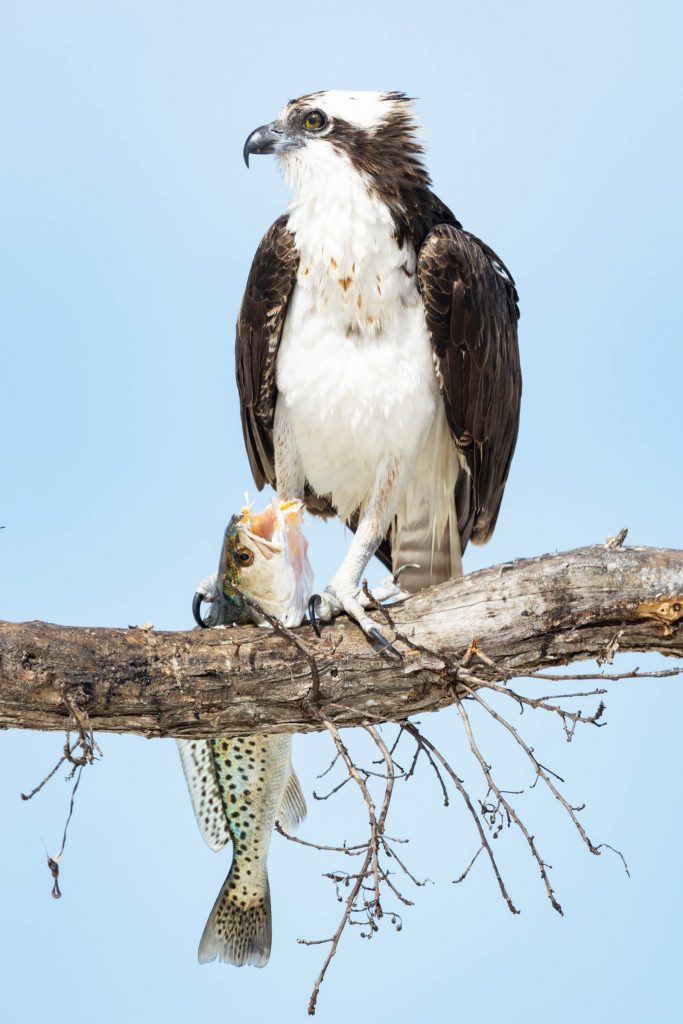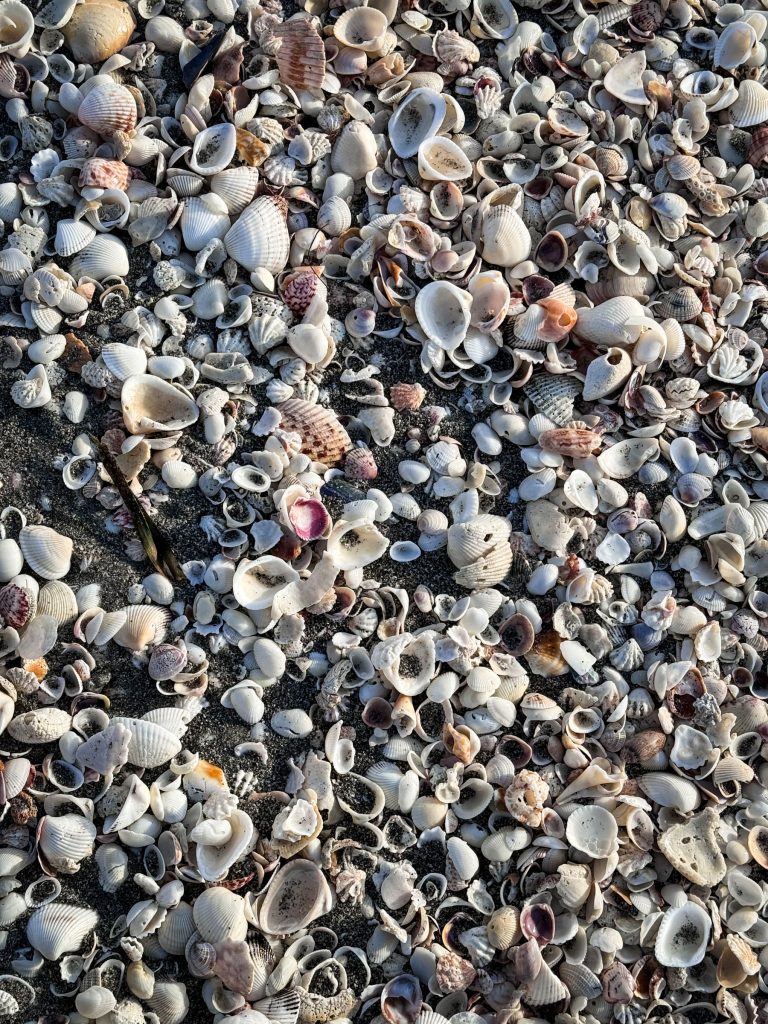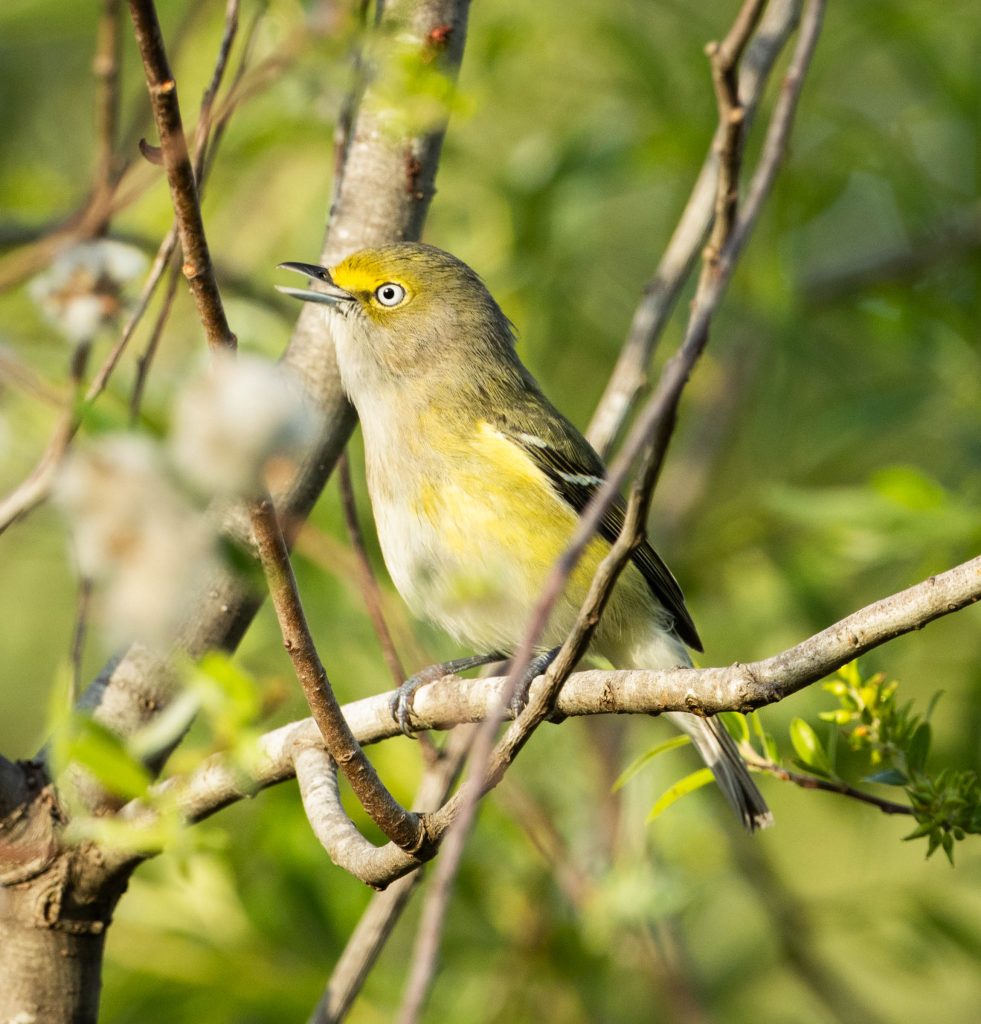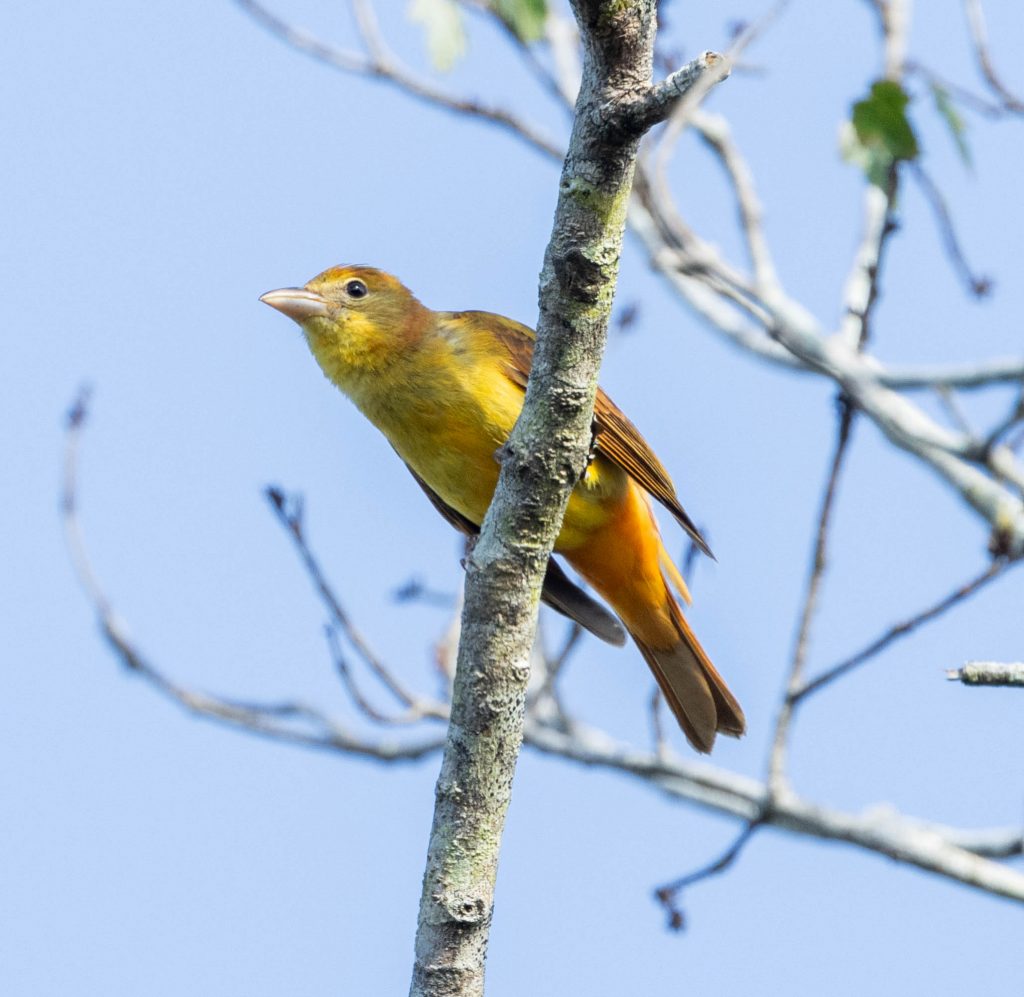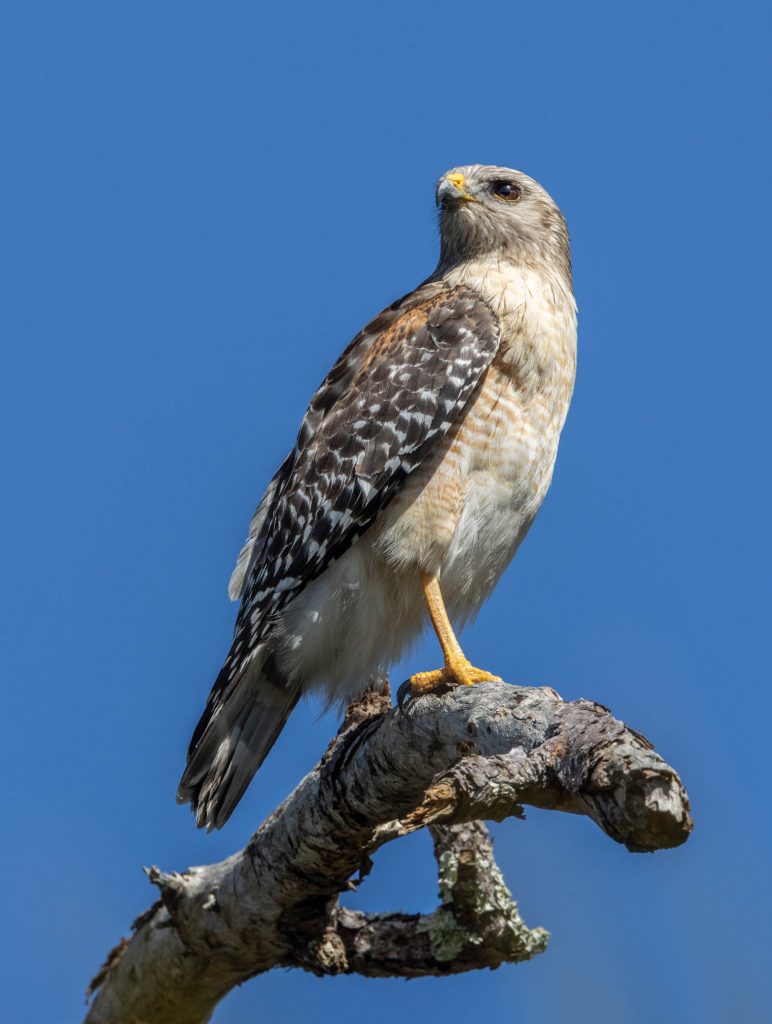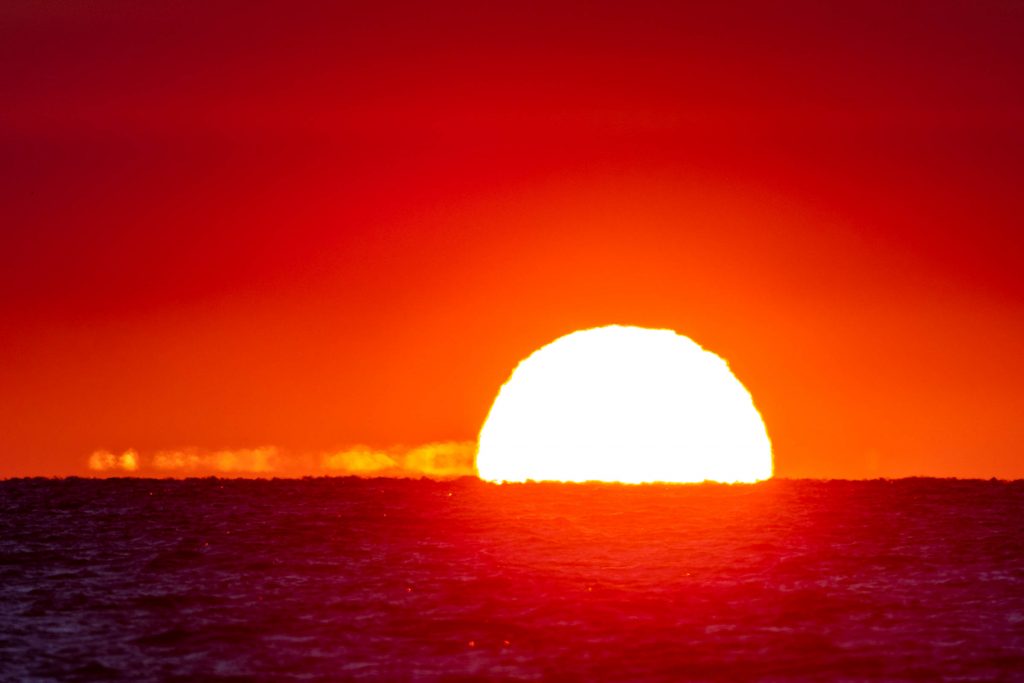The gulf coast of Florida is a rare bit of sub-tropical habitat attached to the mainland US. Some of my family members recently relocated to the area, giving me one good reason to visit. But of course there were additional reasons – it’s a different area to explore, and a good place to find new and interesting birds.
In this case, the family portion of this trip intersected the bird portion. My host in Florida was my oldest brother. Since 2019, he and I have had an ongoing bird listing competition. We started at 0 birds on January 1, 2019, and have been tallying a “new species list” ever since (limited to North America & Hawaii). At the start of this trip, we were exactly tied at 396.
After I arrived and got settled, our first outing was tracking down a bird I’ve known about for decades, but never seen – the Red-cockaded Woodpecker. These small woodpeckers only nest in mature southern pine forests, of which there are not many left. While the birds are rare, they are also one of the most well-studied birds of eastern North America. So, we generally knew the locations where Red-cockaded Woodpeckers could be found. Actually finding the bird once you get there? That can take a bit of detective work.
We arrived at a mature open forest of South Florida Slash Pines. Mature Slash Pine is valuable lumber, which meant most of it was logged decades ago. Only a few scattered remnants of this forest remain today – it’s all the Red-cockaded Woodpecker has left.
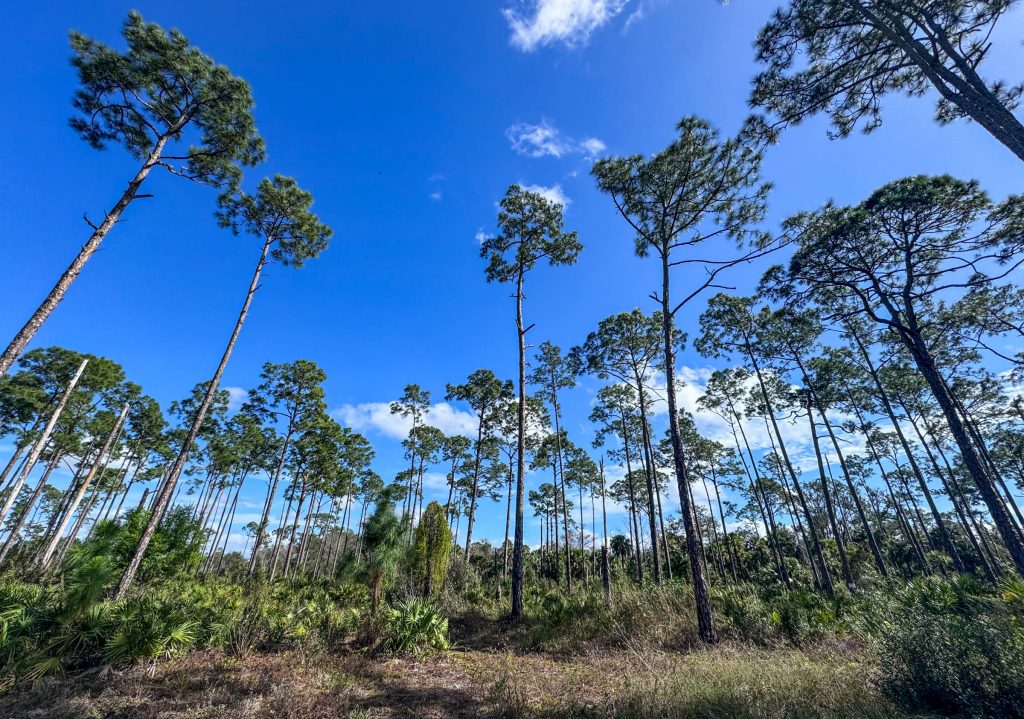
But where were the birds exactly? We arrived at mid-day, and figured the woodpeckers would be less-active, but did they rest on the sides of bare trunks? In holes? on old snags? in the canopy? We searched for over an hour, and found many other interesting birds – including other woodpeckers like the Red-bellied and Pileated. But, no luck with our target.
We also saw small groups of Brown-headed Nuthatches. These are common birds throughout the southeastern US, but new to me (so I quickly gained +1 in our contest). Like their cousins around the world, these were busy doing “nuthatch things” like prying pine nuts out of pine cones.
But we weren’t having any luck with the Red-cockaded Woodpecker. We had about given up hope spotting this elusive target, and headed back to the trailhead. Then, suddenly – there they were. It turns out the Red-cockaded woodpeckers were hanging out toward the canopy of the trees. It was just a matter of looking carefully at the right part of the right trees at the right time.
Females like this one are all black and white. Males have a very small red patch on their cheek – which is like an ornament or cockade, hence the name. We ultimately saw 2 or 3 of these birds, but never spotted any red cockades – even on males these are sometimes difficult to see. But nearly all these birds have decorations of another sort – colorful leg bands attached by scientists studying the birds. The bird in the photo above had a couple of these leg bands, just not visible in this image
All this attention and scientific study has helped. Global populations of the Red-cockaded woodpecker reached a low of under 10,000 individuals in the 1970s, but is about 2-3x that today. The species was recently reclassified from threatened to “near-threatened”, which is a positive trend.
After our visit with the woodpeckers, we did a quick swing through Marco Island, perhaps the most-southern mid-sized community on the Florida gulf coast. By the looks of it, this is an expensive place to live – many of the homes are connected by canals, so those of means can boat from place to place. I took my drone up to have a look around. Nice digs if you can swing it.
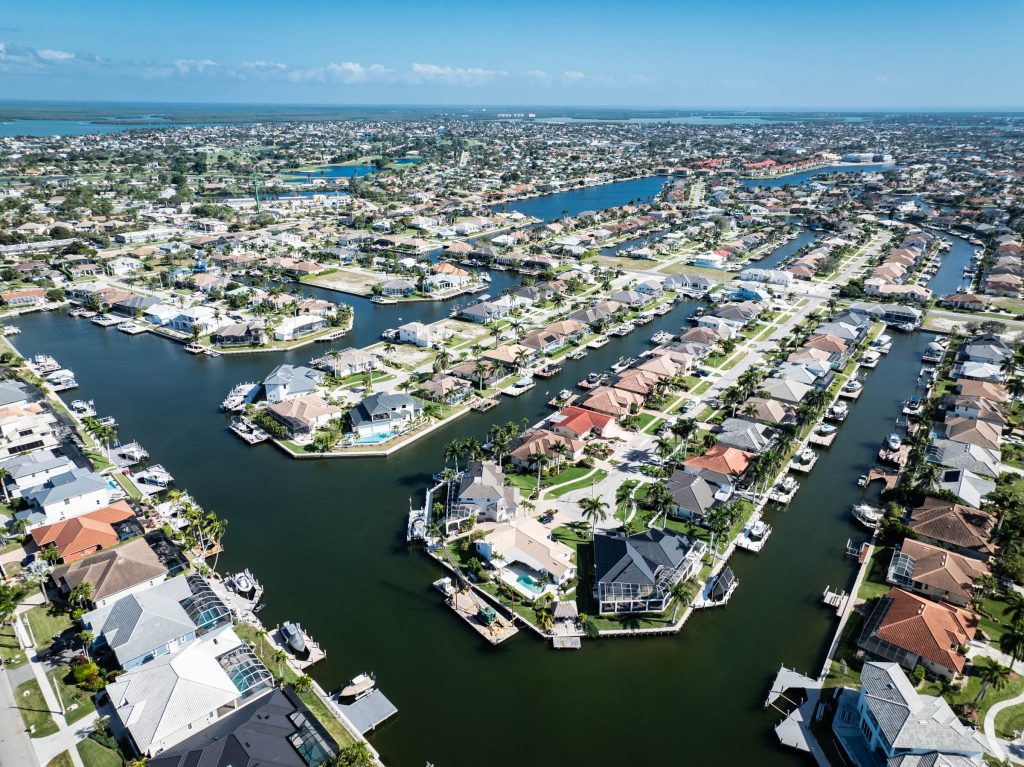
As for the bird angle (there’s often a bird angle if you look for it), Marco Island has adopted the Burrowing Owl as a sort of mascot. These birds nest all around the community. As you travel through, it’s hard to miss the many small fenced-off patches in yards and unbuilt lots. Each of these patches has a 1ft high T-shaped perch installed next to burrows in the sandy soil. The owls are cute and highly-visible – they’re hard to resist. We didn’t see any Burrowing Owls on this brief visit, unfortunately. It was still a few weeks before the breeding season started.
The next day, I headed out for a solo adventure to a local natural area. A local organization called the CREW Land and Water Trust (CREW = Corkscrew Regional Ecosystem Watershed) manages about 60,000 acres of habitat in the area. They’ve built a number of trails in these lands, which are open to the public. This is a vital resource to the people of the area, not only for protecting habitat and providing recreational & educational opportunities, but also conserving fresh water.
Almost immediately upon starting the hike, I spotted a Loggerhead Shrike surveying the scene from the top of a trail marker. These songbirds use their hooked bills to snag everything from large insects to mice. If they catch more than they can eat, they sometimes impale the excess on thorns and barbs. This has earned them the nickname “butcherbird”. Can you tell I was on the Orange Trail?
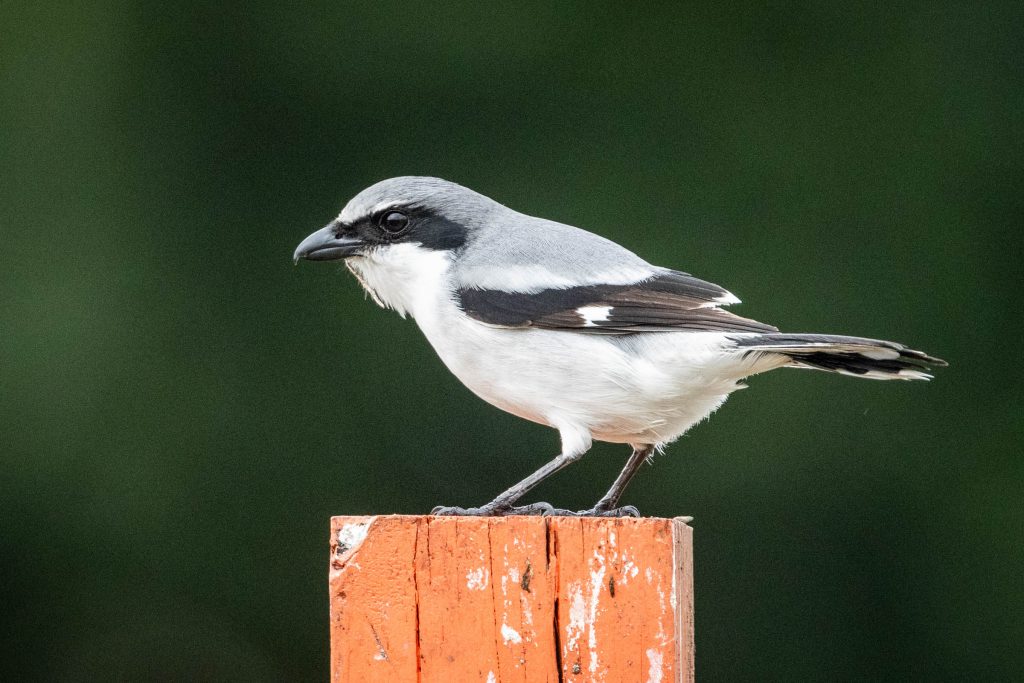
The trail then wound through a landscape of grasslands and pines. I saw a flash of black, white and red weaving through the trees, and narrowed my view to find a Red-headed Woodpecker. These birds are found throughout the eastern United States, but aren’t exactly common anywhere. In this area they seemed to be doing quite well – I ultimately saw about 3-4 of these birds in different locations.
Dozens of Palm Warblers flitted through the bushes as I continued along. These are perhaps the most common songbird in the area, inhabiting everything from parking lots to swamps. They’re distinctive even from a distance by a habit of bobbing their tails.
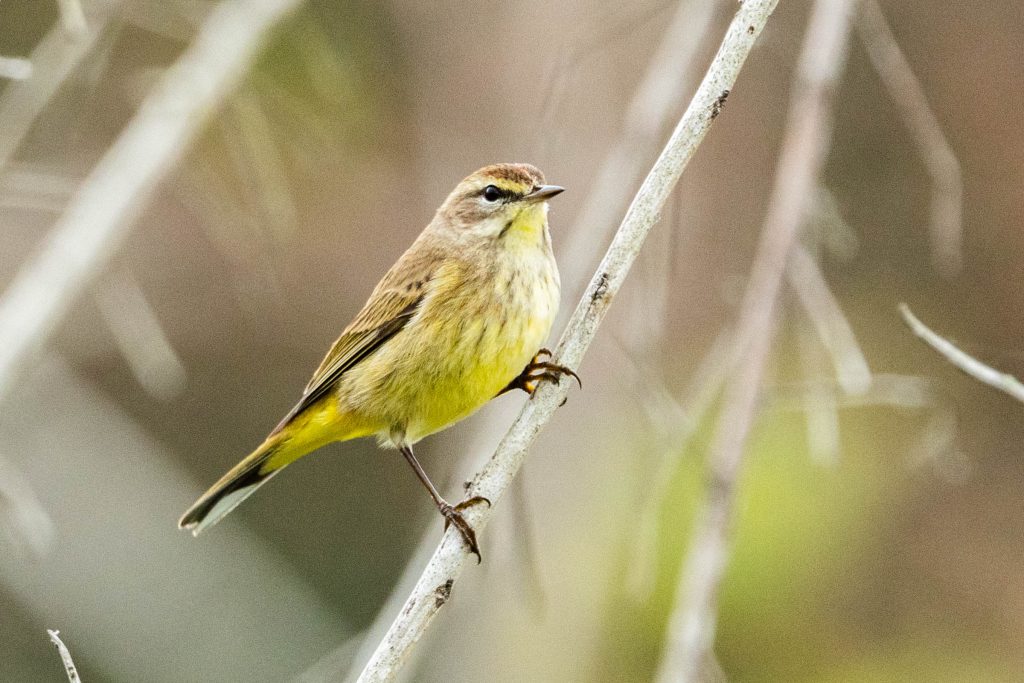
Back to the pines, a closer look revealed another southeastern specialty – the Pine Warbler. This one was really living up to its name.
Birds aren’t the only inhabitants. Wherever there is fresh water, there are alligators. This one was only a foot long, and almost a bit charming. But surely it would snatch a finger if given the chance.
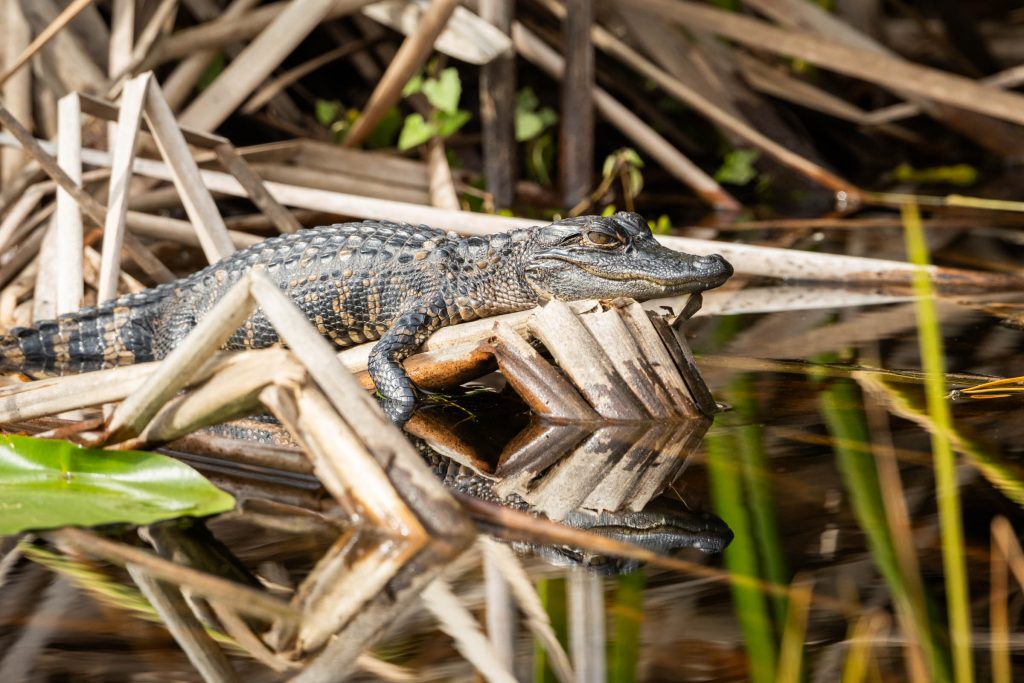
I took a slight detour to another trail – the Purple trail, which ultimately headed about 10 miles west toward another trailhead. I didn’t have time to cover all that distance, only a quick out-and-back. This overhead view shows the nature of the landscape along the Purple Trail.

The trail is routed straight toward the horizon through the middle of this frame – it’s a path through the flat forest interrupted by muddy/sandy puddles left from recent rain.
Suddenly, a bird flushed from about 40 ft away, and landed at a bush just 20 ft from me. I had only a fraction of a second to view the bird – it was small, roundish, with a short tail, and rufous underwings. I looked intently at the spot where it landed, and all around the area nearby. But I never could relocate it. After some reflection, I think it was most likely a Yellow Rail. These shy and rarely-seen birds winter in the area, and this flooded forest was good habitat for them. All signs matched – the size, color, habits, etc. But this just wasn’t a solid-enough sighting to count such a rare bird. So, I’ll have to wait for another chance to locate a Yellow Rail.
Looping back toward the trailhead where I started, I came across a large flock of Common Grackles. These birds are indeed common over much of the eastern US. Many people dismiss them as an unremarkable “black bird”. But when the light hits their feathers just as they’re displaying, they shine brilliantly.
My home base for this trip was the Estero area, south of Fort Myers. Specifically, I was staying in the community of Shadow Wood, a tidy housing development interwoven with golf courses. There is a fair amount of habitat in Shadow Wood, not only on the edges of the golf courses and many lakes, but in a few natural areas with boardwalks heading through. I counted about 30 species during one of my walks through the community, including a Short-tailed Hawk overhead – another lifer for me, and +1 in our competition.
Fish Crows were also in abundance at or around Shadow Wood. I’d briefly seen these birds the prior year in Atlanta, but here I got a much closer view. Fish Crows look similar to the more ubiquitous American Crow, but have a distinctive caw flavored by a southern drawl.
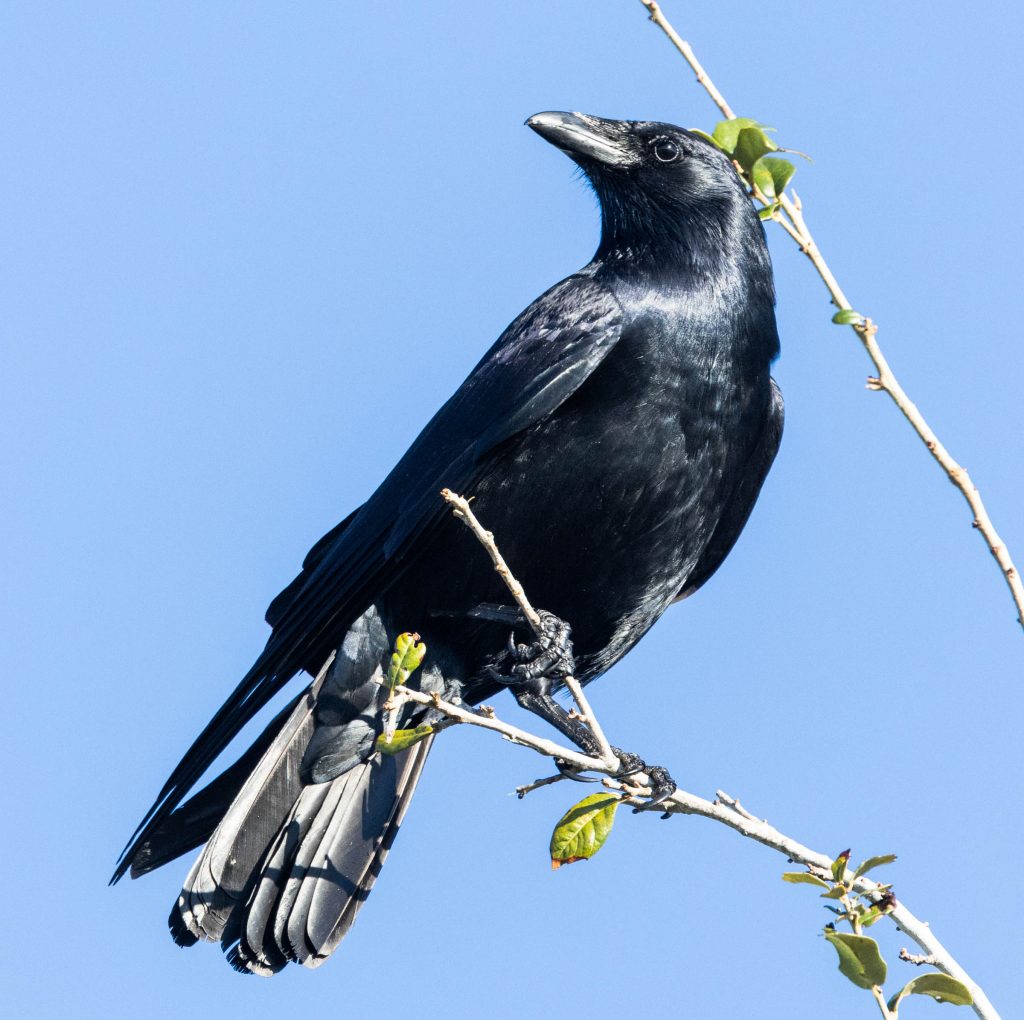
Here’s an overhead view of some of the habitat and homes in Shadow Wood. These woody islands might not comprise the majority of the landscape, but they are vital contributions to a more complete ecosystem.
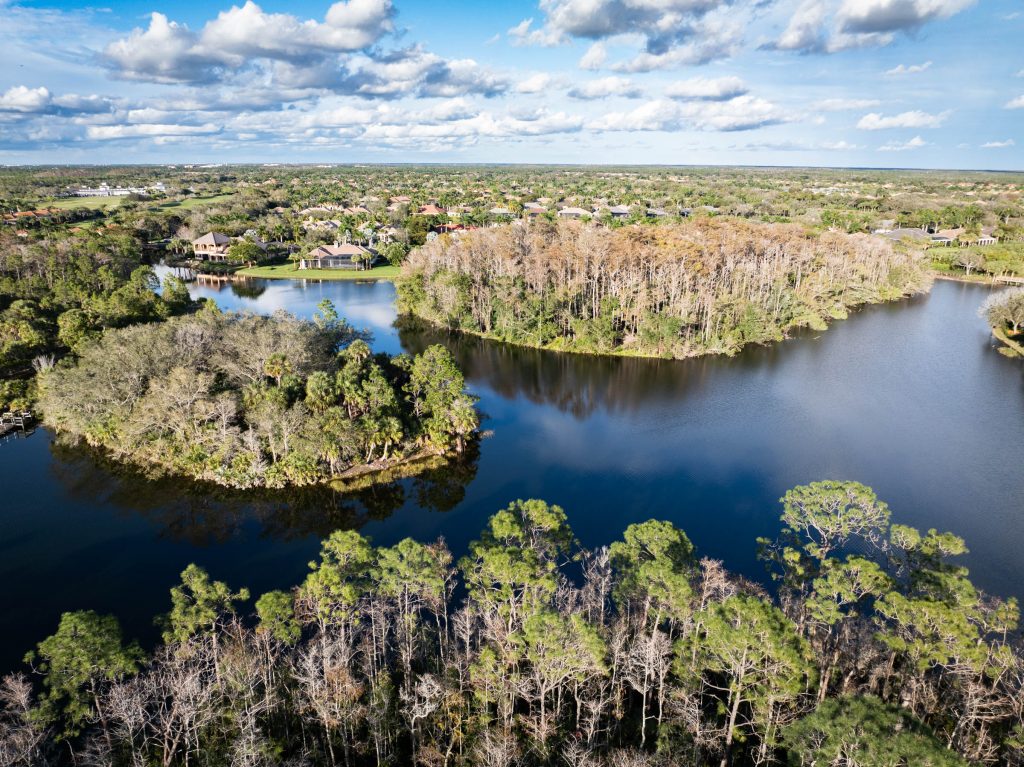
Next, it was time to head for the beach. We traveled up the coast toward Fort Myers Beach, first stopping at Lover’s Key State Park. A short walk brought us to the open sands and gentle waves of the Gulf of Mexico.
As we strolled along, we heard the incessant screeching of what turned out to be an Osprey. The noisy bird was sitting on a nest, and all worked-up because her mate had caught a nice fresh fish. He was selfishly picking at it just a couple hops away. The fish turned out to be a Spotted Sea Trout. Pretty good eating even for human tastes.
We didn’t stay for the resolution of the domestic drama, but one has to assume the female got her share before too long.
We continued on our way next stopping at the San Carlos Bay Bunche Beach Preserve. Here the beach stretched more gradually into the water, forming long sand bars just 50 yards out. On one of those sand bars was another of our target birds – the American Oystercatcher.
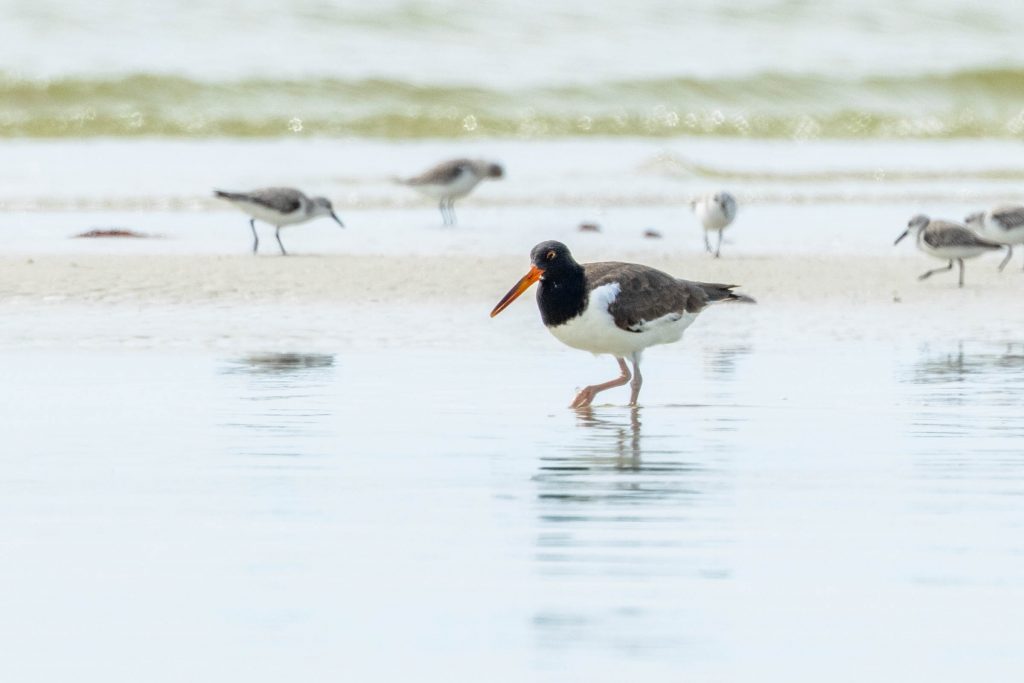
There were no oysters that I could see (and to be fair, Oystercatchers don’t know they’re named Oystercatchers), but there were plenty of other squishy things to eat, supporting a large population of shorebirds scampering across the sands.
Not far from where I was standing, this Black-bellied Plover yanked a giant worm from the sand. From the photos, it appears to be just a common earthworm, but given that this was a tidal sand flat, there’s a good chance it’s some other variety of worm – I’m just not a vermiculturist. But perhaps I should start counting them.
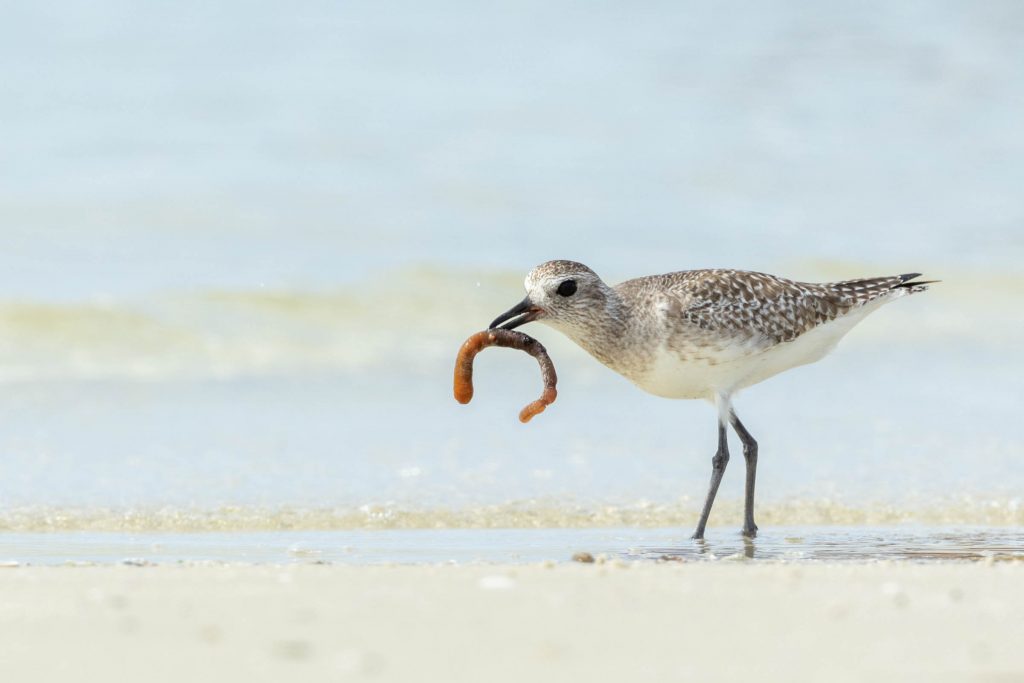
And it seems there were worms for of every size of bird. This tiny Piping Plover got a juicy morsel a few moments later, appropriately portioned.
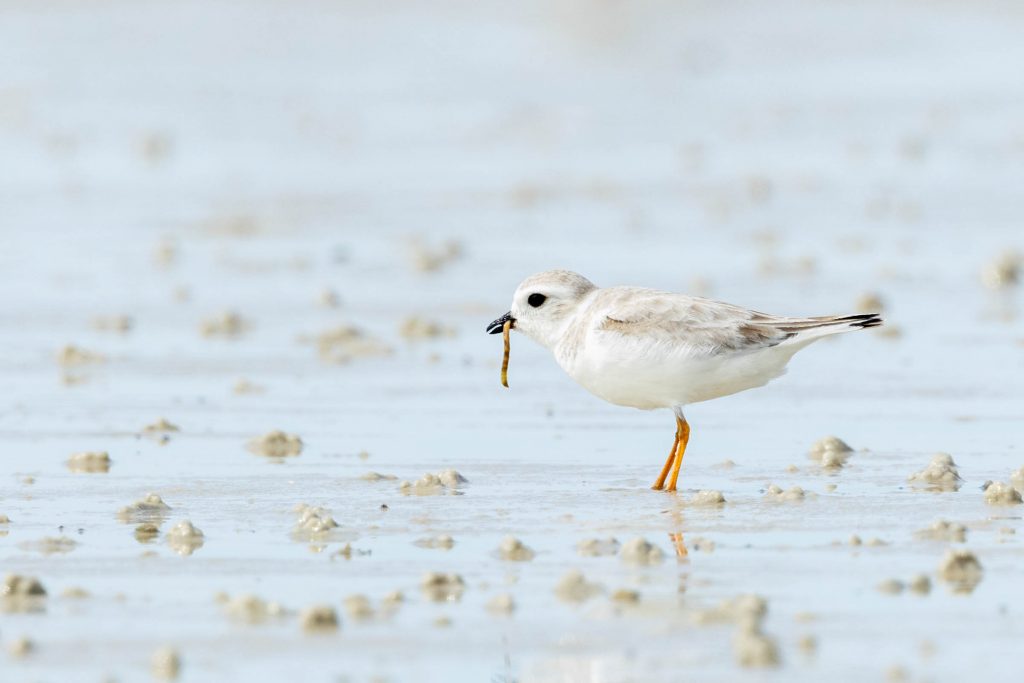
Onward we headed, north and west across a long bridge to Sanibel Island. Sanibel Island is known for a lot of things – beaches, sea shells… and of course the Mangrove Cuckoo.
The mangrove forests of Sanibel are at the northern edge of the range of this tropical bird. A one-way wildlife-viewing road winds through the heart of this forest. We crept slowly along, checking every branch and shadow. We did find a lot of other interesting birds – from White Pelicans, to Herons and sandpipers of many sorts. But we did not have luck with the Mangrove Cuckoo. Truthfully, we didn’t really expect to find one. They’re not common, and tend to be secretive. But you never know unless you look. We did meet a fellow birder who saw one earlier in the day in the same area. They are out there. It just takes a bit of persistence and luck to cross paths with one.
So, we headed across a short bridge to Captiva Island, Sanibel’s northern neighbor, and back to the beach.

This quiet beach extended for miles. And along the way were endless piles of small shells of all shapes and colors. One could wander all day in search of the perfect one.
Just beyond the shells however, there were, of course – birds. These included at least 3 varieties of Terns – many Royal Terns, one lonely Forster’s Tern, and a few individuals of a new tern for me – the Sandwich Tern. Well-behaved terns like to hang out together, because as everyone knows – one good tern deserves another.
Sandwich Terns have a distinctive black bill with a yellow tip. As the breeding season kicks into gear, that black cap will spread to the birds entire forehead, giving a more traditional “Tern Look”.
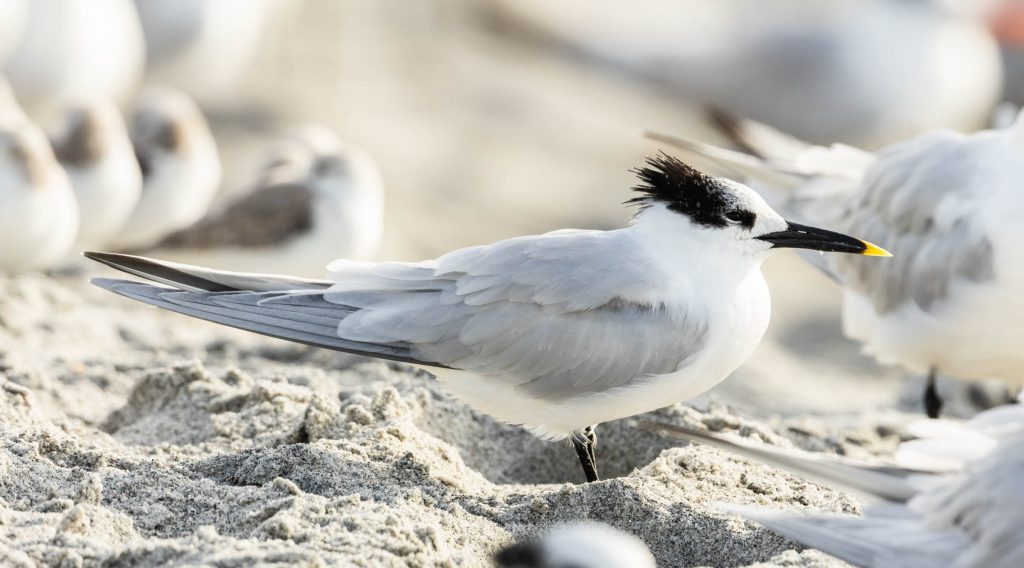
One thing you can’t see in these photos is the destruction. Not from the birds or the people, but from Hurricane Ian, which struck the area in September 2022. The devastation is difficult to overstate – virtually every building lining the coast of Sanibel Island was rendered uninhabitable by this storm. The worst of the damage came from the storm surge. This swamped everything up to 10ft above sea level, destroying the bottom level of virtually every building on this part of the coast, and rendering any upper floors uninhabitable. 2 years later, most of these buildings remain unoccupied. Rebuilding is happening, but it’s slow and costly… and the threat of another storm is always in the background.
It wasn’t all birds. We did other things. Really! We visited the Edison-and-Ford museum (where Thomas Edison – the original snowbird – had his wintering grounds). We visited family. We talked endlessly about real estate and pickleball… but then it was back to the birds.
One short side-trip took us to an ideal location to find a Limpkin. This unique bird looks a bit like a stork or a heron, or ibis… but it’s none of these. It’s a Limpkin; the only bird in its family (Aramidae). Limpkins are specialists at eating Apple Snails. These large snails have been spreading north, and the Limpkins are limping along, following the snails – one of the few avian species expanding its range in recent years. Limpkins are not exactly uncommon on the gulf coast of Florida, but I hadn’t seen one yet. We arrived at this particular location, and there were a pair of Limpkins just beyond the parking lot.

The next day, we got up early for what else – more birds! This morning trip took us to another location in CREW Land and Water Trust territory – the “Rookery Swamp”. We signed-up for an organized walk with a naturalist, and a bunch of fellow enthusiasts. All these eyes helped us pick out lots of birds, including this White-eyed Vireo.
Further along the trail, someone found a Painted Bunting taking a bath. I wasn’t able to get into position until it was drying-off. That’s how I managed a photo of this soggy individual.
Perhaps a highlight of the day was this mystery yellowish-red bird high in a tree. It took a little patience to get a clear view and a clear shot, but it was indeed a Summer Tanager. These aren’t super rare birds – I’ve seen them before in Chicago – but still unusual for the area. It’s been a month since I was there until I’m writing these words, and nobody else has yet reported another Summer Tanager at this location. That must be worth something.
Our final excursion was to perhaps the jewel in the crown of regional trails – the Audubon Corkscrew Swamp Sanctuary. It features a 2.25 mile boardwalk through original bald cypress swamp. (And by the way – a swamp is a wetland dominated by trees, a marsh is a wetland dominated by grass.) Visitors to the boardwalk need to make a reservation, to help manage the foot traffic.. since this entire route is a boardwalk with railings. It is a one-way loop, which also helps manage the traffic.
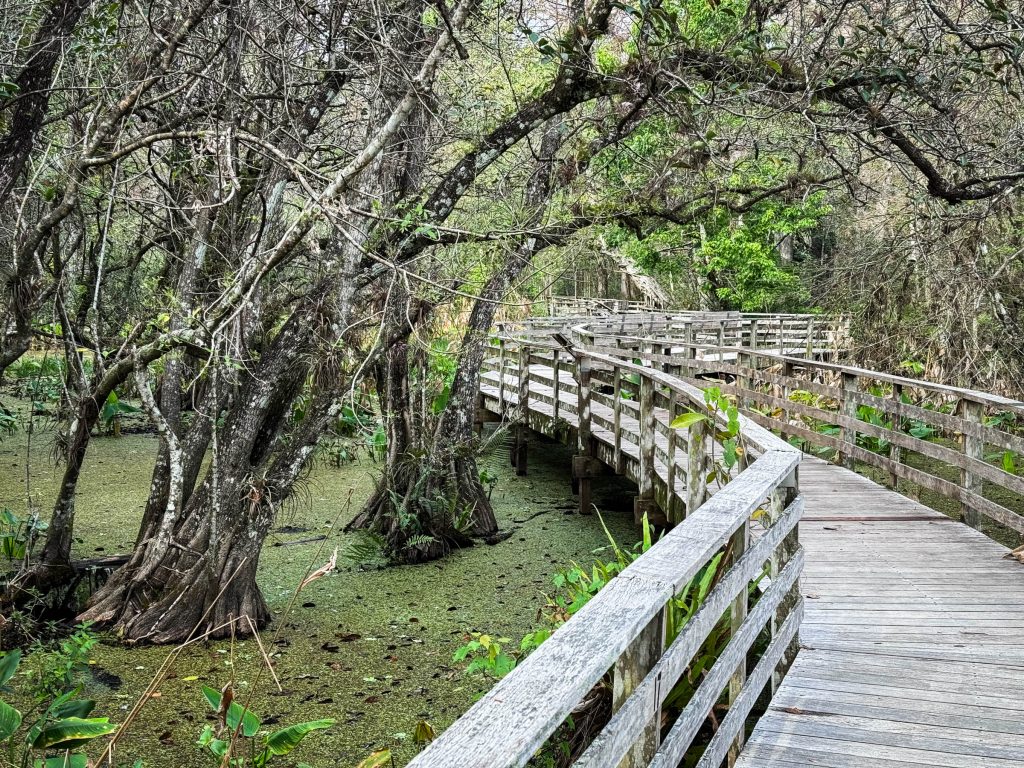
Red-shouldered Hawks are perhaps the most common and visible large raptor in the area. Back in Oregon (in the opposite corner of the country, where I live), this species is slowly expanding its range northward – I recently observed the first Red-shouldered Hawk to visit my local birding “patch” (i.e. my local park). But in Florida, these birds are nearly ever-present. It must be nerve-wracking to be a small mammal or bird in this area – so many creatures want to eat you!
A little further along, we crossed paths with another new bird for me – the Yellow-bellied Sapsucker. Ok, technically, I had a distant view of one the prior day. But at the Corkscrew Swamp, this one hung around for a while. You can’t see the yellow belly from this angle, but it was there – trust me!
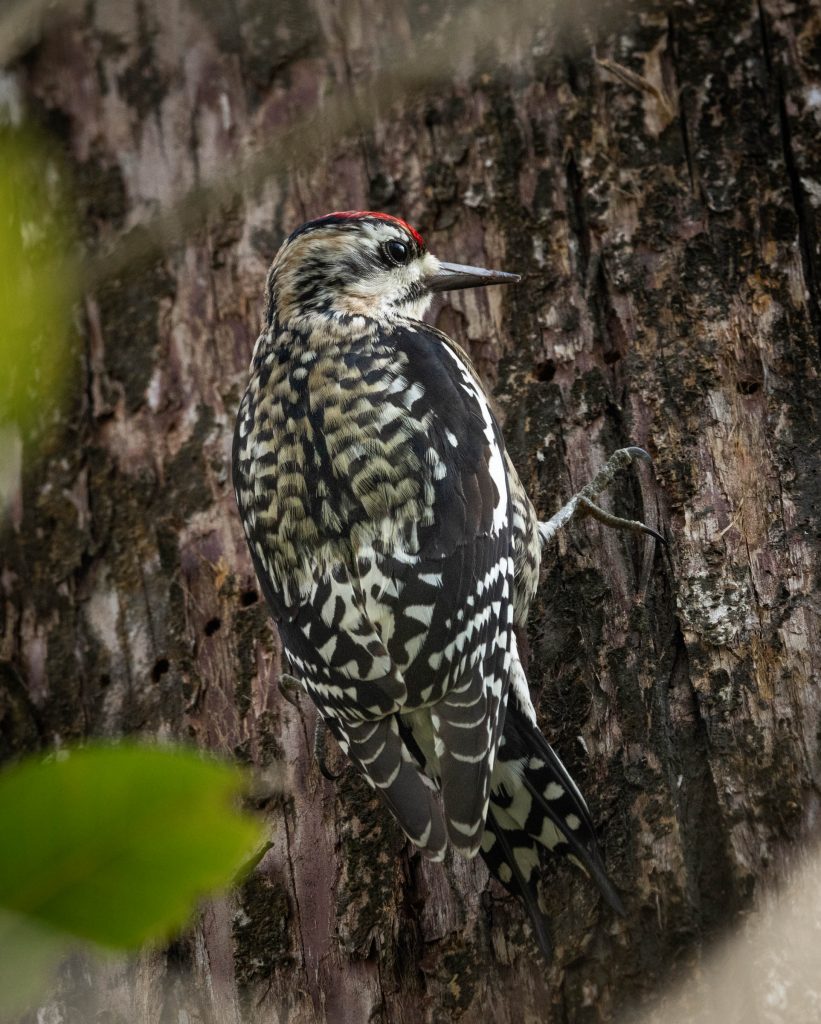
A highlight of this particular area, on this particular afternoon was an abundance of warblers. We saw 8 different warbler species, like this Black-throated Green Warbler.
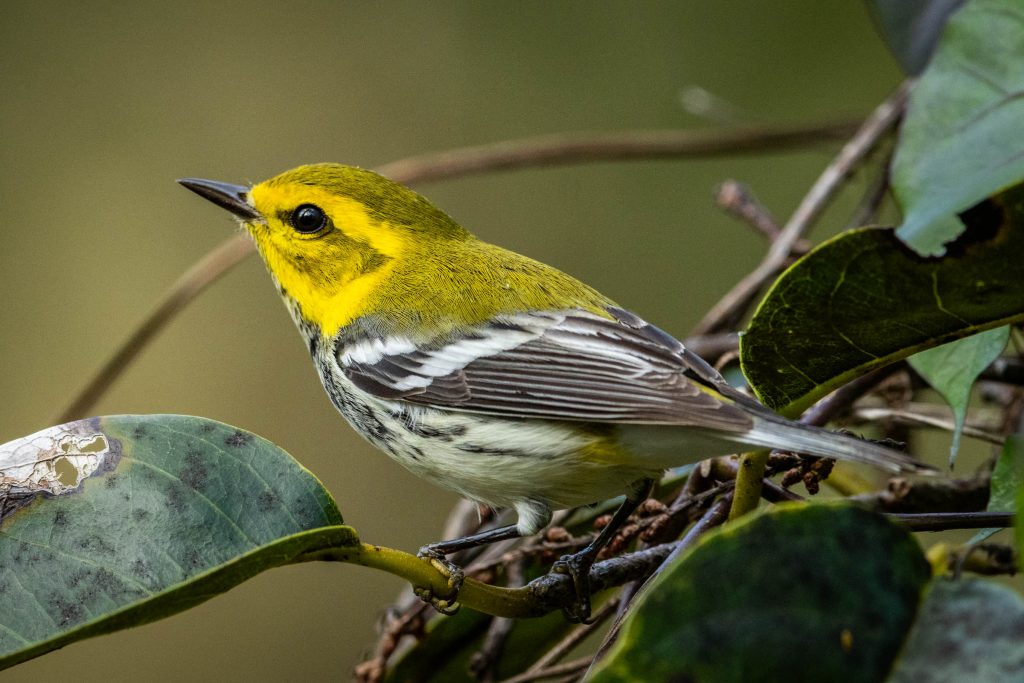
None of these were new to either of our lists, but they’re still nice to see. In total over a couple hours walking, we saw 28 species along the Corkscrew Swamp boardwalk, and that isn’t a an exceptional number for this exceptional area.
The trip to Florida was a lot of fun – the bit of competition just made it more so. By the end of the trip, I was ahead by about 8 birds. (My brother did manage to gain 1 back, with a Wilson’s Plover, which I had already seen, but he had not yet).
I still have unfinished business along the gulf coast of Florida. Those Mangrove Cuckoos are out there. Plus, I didn’t mention the Snail Kite, or the Florida Scrub-Jay. Next time! Till then, we’ll just let the sun set on another successful avian adventure.
